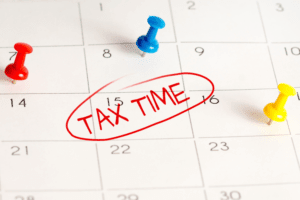
Analysts must assess the company’s general situation before placing too much value on a company’s retained earnings—or its accumulated deficit. Therefore, public companies need to strike a balancing act with their profits and dividends. A combination of dividends and reinvestment could be used to satisfy investors and keep them excited about the direction of the company without sacrificing company goals. Since retained earnings demonstrate profit after all obligations are satisfied, retained earnings show whether the company is genuinely profitable and can invest in itself. As an investor, you would be keen to know more about the retained earnings figure.
Strategic Implications for Management
If a company has a net loss exceeding the initial accumulated income balance, there will be a deficit, impacting investing, and capital spending. Dividends paid are the cash and stock dividends paid to the stockholders of your company during an accounting period. Where cash dividends are paid out in cash on a per-share basis, stock dividends are dividends given in the form of additional shares as fractions per existing shares. Both cash dividends and stock dividends result in a decrease in retained earnings. The effect of cash and stock dividends on the retained earnings has been explained in the sections below.
Related AccountingTools Course
Retained earnings are related to net (as opposed to gross) income because they are the net income amount saved by a company over time. If a company decides not to pay dividends, and instead keeps all of its profits for internal use, then the retained earnings balance increases by the full amount of net income, also called net profit. If corporations weren’t at risk of the accumulated earnings tax, many would keep hold of their income to prevent their shareholders from being taxed on dividend income.
Find your beginning retained earnings balance
This can make a business more appealing to investors who are seeking long-term value and a return on their investment. When a company pays dividends to its shareholders, it reduces its retained earnings by the amount of dividends paid. When a company consistently experiences net losses, those losses deplete its retained earnings. Prolonged periods of declining sales, increased expenses, or unsuccessful business ventures can lead to negative retained earnings.
How Did Warren Buffett Get Rich? 4 Key Stocks to Follow
Operating earnings for the Financial Services segment were $146 million in the second quarter of 2024, compared to $112 million in the second quarter of 2023. The increase in operating earnings accumulated retained earnings was primarily due to higher volume from increased capture rate and Lennar deliveries. However, for other transactions, the impact on retained earnings is the result of an indirect relationship.
- The retention ratio (or plowback ratio) is the proportion of earnings kept back in the business as retained earnings.
- For instance, the first option leads to the earnings money going out of the books and accounts of the business forever because dividend payments are irreversible.
- However, if a company’s motivation appears to be tax avoidance, it can be subject to an accumulated earnings tax of 20%.
- For instance, a company may declare a stock dividend of 10%, as per which the company would have to issue 0.10 shares for each share held by the existing stockholders.
- When a company generates net income, it is typically recorded as a credit to the retained earnings account, increasing the balance.
When expressed as a percentage of total earnings, it is also called the retention ratio and is equal to (1 – the dividend payout ratio). For this reason, retained earnings decrease when a company either loses money https://www.bookstime.com/ or pays dividends and increase when new profits are created. Factors such as an increase or decrease in net income and incurrence of net loss will pave the way to either business profitability or deficit.
- This financial metric is essential for business owners to understand their company’s growth and reinvestments.
- And while that seems like a lot to have available during your accounting cycles, it’s not.
- The accumulated earnings tax penalty is 20% of the company’s accumulated taxable income for the year (or years).
- When lenders and investors evaluate a business, they often look beyond monthly net profit figures and focus on retained earnings.
- With plans starting at $15 a month, FreshBooks is well-suited for freelancers, solopreneurs, and small-business owners alike.
- The higher a company’s net income, the more earnings they can contribute to retained earnings.
- These include revenues, cost of goods sold, operating expenses, and depreciation.

Cash dividends represent a cash outflow and are recorded as reductions in the cash account. These reduce the size of a company’s balance sheet and asset value as the company no longer owns part of its liquid assets. A company is normally subject to a company tax on the net income of the company in a financial year. In most cases in most jurisdictions no tax is payable on the accumulated earnings retained by a company. However, this creates a potential for tax avoidance, because the corporate tax rate is usually lower than the higher marginal rates for some individual taxpayers. Higher income taxpayers could “park” income inside a private company instead of being paid out as a dividend and then taxed at the individual rates.


